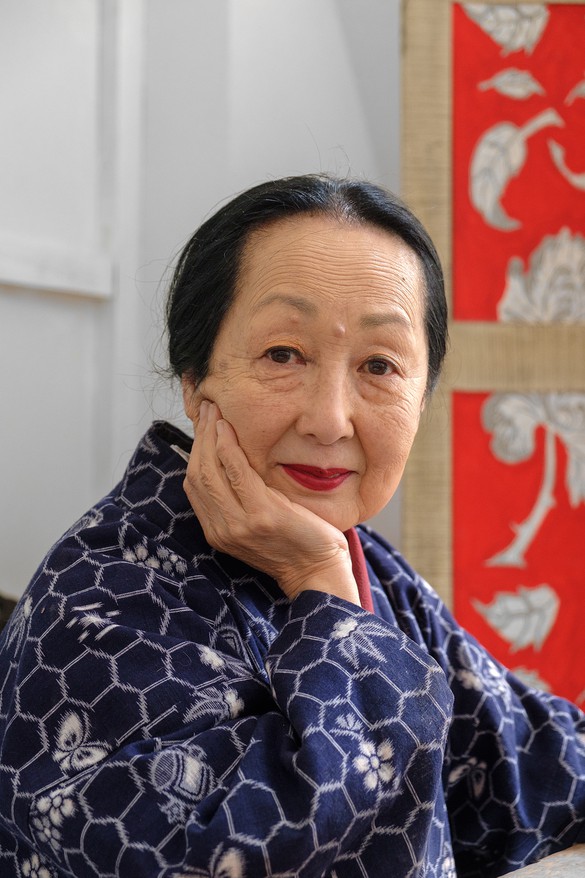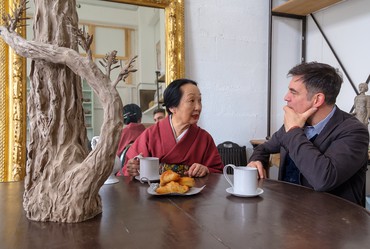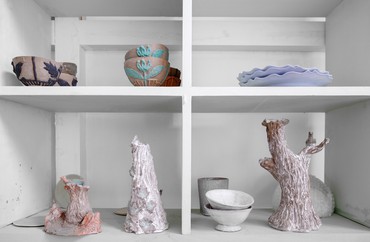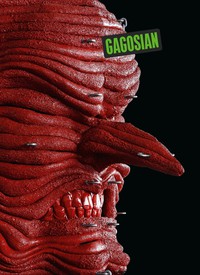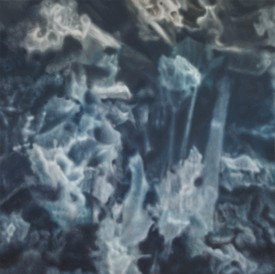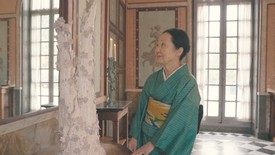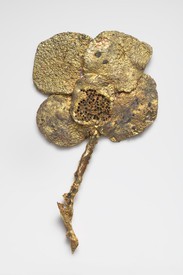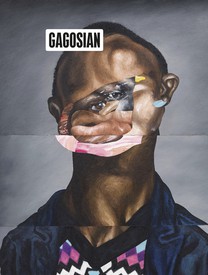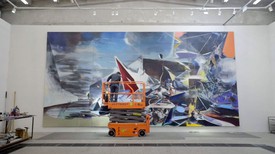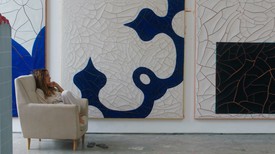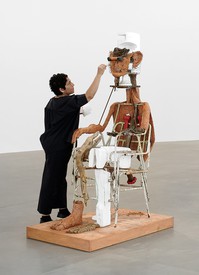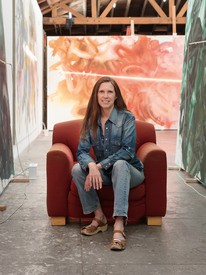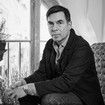
Benoît Astier de Villatte and Ivan Pericoli, founders of the atelier Astier de Villatte, Paris, are renowned for their signature approach to ceramics, following in the tradition of the city’s great eighteenth- and nineteenth-century ceramic studios. Photo: Julie Ansiau
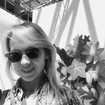
Elsa Favreau graduated from the Sorbonne, Paris, with an MA in French literature, and from the School of Oriental and African Studies, London, with an MA in art history and as the author of a thesis on the Chinese artist Pan Yuliang. She lives in Paris and has been with Gagosian, Paris, since it opened in October 2010.
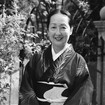
Setsuko was born in 1942 in Tokyo and lives and works in Paris and at the Grand Chalet de Rossinière, Switzerland. She has exhibited in Tokyo, Paris, London, Rome, Geneva, and New York, and her work is included in institutional collections such as that of the Metropolitan Museum of Art, New York. Since 2002, Setsuko has served as the honorary president of the Fondation Balthus, and in 2005 she was designated UNESCO’s Artist for Peace. Photo: Yuko Yamashita
Elsa FavreauIt might be best to begin this conversation by talking about your collaboration.
Setsuko Klossowska de RolaHow long have we known each other? It’s been a very long time.
Benoît Astier de VillatteYes!
SKRI met Benoît when his father, Pierre Carron, was at the Villa Medici. How old were you?
BAVI was born there!
SKRSo I met Benoît when he was in a baby carriage. When I realized that Benoît Astier de Villatte of the Astier de Villatte atelier was the Benoît born at the Villa Medici, I immediately picked up the phone to get in touch.
BAVTrue!
SKRSo we met and he gave me a tour of his ravishing studio, on the rue Saint-Honoré in Paris. Everything there is so beautiful! It reminded me of Balthus and his perfect sense of beauty. So I can’t remember if it was your idea or mine to collaborate—
BAVAt first we thought we’d do something for your home, the Grand Chalet in Rossinière, Switzerland. There’s a lot of crockery in the studio so the idea of art for the home came naturally. But it was when Setsuko came to the studio and started touching the clay that I felt she was in her element. To make a set of dishes, though, you don’t necessarily need to shape the clay yourself; you can ask the mold-maker to make an initial form and then it’s actually pretty conceptual to make dishes.
SKRThe first thing was the cat, an incense burner.
BAVOh right! And actually you immediately felt you could make something more creative.
SKRWhat was incredible was that we met there and I immediately began making something. It was almost fate that brought us together and had us do something together. There were also Tibetans in the studio who sang, prayed, and laughed a lot; that positive, peaceful atmosphere, which I consider essential to my life, made me feel at home there. Benoît and Ivan Pericoli gave me carte blanche to do what I wanted. It was the combination of that freedom and that atmosphere that led me to make Into the Trees.
BAVThose sculptures emerged from the collection we were making together. What I find so interesting about clay as a material is the freedom it allows, and what’s extraordinary is that you began working so quickly on large pieces without a priori experience. When you’re making something in clay, there’s a lot of waiting around. For the cat, for example, you had to work out a mold, then wait for the mold to be made, then make a first proof, and so on. There are stages when we do nothing but wait. Amazingly, when you were at your workbench in the studio like any other craftsperson, instead of waiting for the mold to come out so you could keep on making the object, you kept working, other things emerged. The creative energy you had when the clay was in front of you on the bench—you knew what to do with it.
In Japan, many traditional ceremonies take place in the forest and old trees are considered sacred. So when I make a tree, I do it with gratitude. As I make it I’m thanking it for letting me make it.
Setsuko
SKRYes, and it’s that atmosphere of generosity, affection, and total freedom that led me to Into the Trees. At first I sculpted several trees rather naturally; it was like following a path I wanted to go down. When Jean-Olivier Després and Elsa Favreau from Gagosian offered me this exhibition in Paris, I was so surprised and happy! I love the way the work is exhibited: so much space in shades of light green, so luminous and gentle. The works stand on tables made of wood from the forest where I live. Thanks to Jean-Olivier and Elsa, this exhibition truly embodies the image of what I imagine the title Into the Trees to mean.
EFWhy did you choose to make trees?
SKRIn Japan, many traditional ceremonies take place in the forest and old trees are considered sacred. So when I make a tree, I do it with gratitude. As I make it I’m thanking it for letting me make it.
BAVA tree grows out of the earth, out of clay. You had clay in your hands and it grew, almost naturally.
SKRA bit like a child, no? Today, in our technological world, we’re distant from nature and we want to be closer to it. To touch and shape earth is a way to live with nature.
EFWhat’s so interesting in the exhibition is that it also includes paintings, which come from another period in your life. Could you talk about your initial training? Before working with clay and making ceramics and sculptures, your media of choice were painting and drawing.
SKRWhen I was with Balthus at the Villa Medici, he was surrounded by young artists, and when we walked in the countryside with them they’d bring their sketchbooks and I did too. I’d drawn a lot as a child, and those contacts with the artists at the Villa Medici reminded me of that. So I asked Balthus if I could paint, and he said I could as long as I didn’t work in oil. When I came across Pompeian painting from antiquity, it reminded me of Japanese painting in its play of light and dark. In copying it, I was able to come closer and closer to what I wanted.
Painting, being a painter, is a way of having a vision that’s varied and stimulating. You can see life as art, friendship and love as arts. You have to cultivate them constantly.
BAVWe create something with the people around us in the same way that we create ceramics.
SKRYes, the making of these trees, in ceramic, terra-cotta, with Benoît and Ivan: it’s not only the story of our collaboration, it’s a medium that has its own story, and for which Astier de Villatte has its own technique.
BAVYes, our clay is interesting—it’s the clay that was used by the French sculptor Georges Jeanclos, our sculpture professor at the Beaux-Arts. Jeanclos was one of the first pensionnaires when Balthus was at the Villa Medici, and on his return to Paris from working with Balthus in Rome, he developed this clay. It was made available to us and we of course brought it to the studio. That history is interesting in relation to Setsuko’s trees: they began at the Villa Medici, in this clay with this color. Its relationship to Rome, which has changed over time, isn’t immediately obvious, but Balthus was very interested in the history of Rome, from antiquity to his arrival at the Villa. Something in the clay speaks to that history as well—it wouldn’t be the way it is if it hadn’t followed that trajectory and passed under Balthus’s eye. Jeanclos wasn’t necessarily aware of that but it made its mark.
EFAnd all of Astier de Villatte’s ceramics are made with this clay?
BAVYes, this clay is the house signature. It’s a sculptor’s clay, not the kind of clay normally used to make crockery or other domestic objects. When we started making ceramics, all the ceramists told us not to use this clay; they’d tell us to not make fine pieces too fragile, don’t do this, don’t do that. What’s funny is that in the end, we made everything out of the simple desire to make it beautiful. Maybe that’s what you also see in Balthus’s work, and in your work too, Setsuko.
SKRThat makes me think about technology. Are we trying to stay human creatures using five senses, or are we neglecting our humanity and our five senses so as to aim at something else? It’s a very serious problem now, I think. Feeling clay with your hands, making fragile things . . . is it better to experience a fragile beauty for a second or solidity for a decade? I’ve used bronze to express that solidity.
BAVWhen they made bronze sculpture in antiquity, it was so that it would be solid and last. Yet when you look at antiquity, you find that the oldest relics surviving are ceramic! Even though ceramics aren’t made to last over time. Bronze can get damaged, but over much longer periods; stone gets less damaged than ceramic and bronze. Even so, our records of the past in ceramic are in every civilization what has best stood the test of time. Once fired, ceramic doesn’t alter much; it can break, but its fragments aren’t going to deteriorate in the way stone or bronze might.
SKRI’m drawn to both materials. And I can paint bronze, and in that way connect to painting. I like to explore those directions; I enjoy that continuity.
Translated from the French by Molly Stevens; artwork © Setsuko; photos: Zarko Vijatovic
